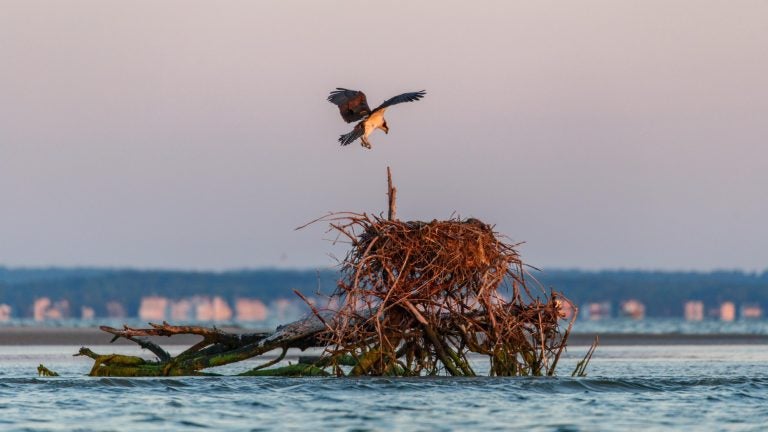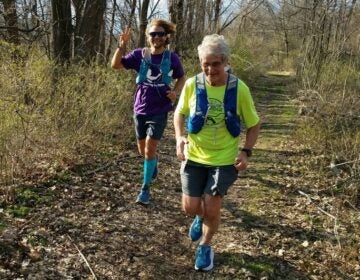Osprey population reaches historic milestone, survey finds
Once again, the New Jersey osprey comeback story added another happy chapter in 2017, a report released by the Conserve Wildlife Foundation (CWF) of New Jersey finds.

An osprey prepares to land on a natural nest in the Barnegat Bay. (Image courtesy of the Conserve Wildlife Foundation of New Jersey)
Once again, the New Jersey osprey comeback story added another happy chapter in 2017, a report released by the Conserve Wildlife Foundation (CWF) of New Jersey finds.
Highlights of the 2017 Osprey Report, which provides the number of nesting pairs, active nests, and nest productivity for the raptors throughout New Jersey, include 668 active osprey nests.
That’s up from 515 in 2016. In 2017, researchers determined the outcome of 519 nesting pairs, which produced 892 young ospreys, the most ever recorded in the projects history.
The study cites “good weather and plentiful forage fish” as contributing factors to the record number.
The largest population gains were observed in Monmouth and Ocean counties, where the population grew by 37% since 2013, when the last statewide census was completed.
Only 50 osprey pairs remained in the state during the early 1970s, nearly eradicated due to pesticide use and habitat loss.
[Related: In Barnegat Bay’s Sedge Islands, ospreys reign]
“Their ultimate recovery is due to the overall health of our estuaries and marine ecosystems, and their prey who have flourished in these areas. Ospreys have largely benefited from the preservation of our coastal salt marshes and the habitat that they provide,” said CWF Habitat Program Manager Ben Wurst. “As a key bioindicator of the health of our coastal waters, it is our mission to ensure the long term sustainability of the state population.”
New Jersey Department of Environmental Protection Division of Fish and Wildlife biologists, CWF biologists, and dedicated volunteers collected the data.
One citizen scientist, Tony Kono, surveyed 150 nests in Monmouth and Northern Ocean counties, recording 82 active nests that produced 91 young.
“It’s clear that the success of the 2017 Osprey Census is due to the hard work and determination of our volunteers!” Wurst added.
From the Meadowlands south to Cape May and west along the Delaware Bay, 408 young were banded by volunteers and staff with United States Geological Survey leg bands for future tracking, according to the report.
“Only decades ago, ospreys had drastically declined across New Jersey and the nation, which makes their continuing recovery all the more remarkable,” said CWF Executive Director David Wheeler. “The ospreys’ expansion speaks both to the improving water quality of our estuaries and rivers and the dedication and leadership of our state and CWF biologists and volunteers.”
Wurst says the project receives no dedicated funding from the state or federal government and is supported by private funding efforts.
WHYY is your source for fact-based, in-depth journalism and information. As a nonprofit organization, we rely on financial support from readers like you. Please give today.




